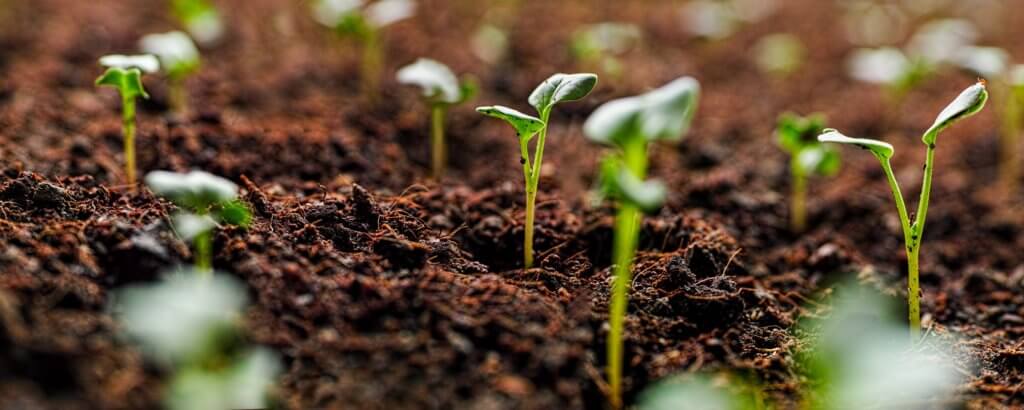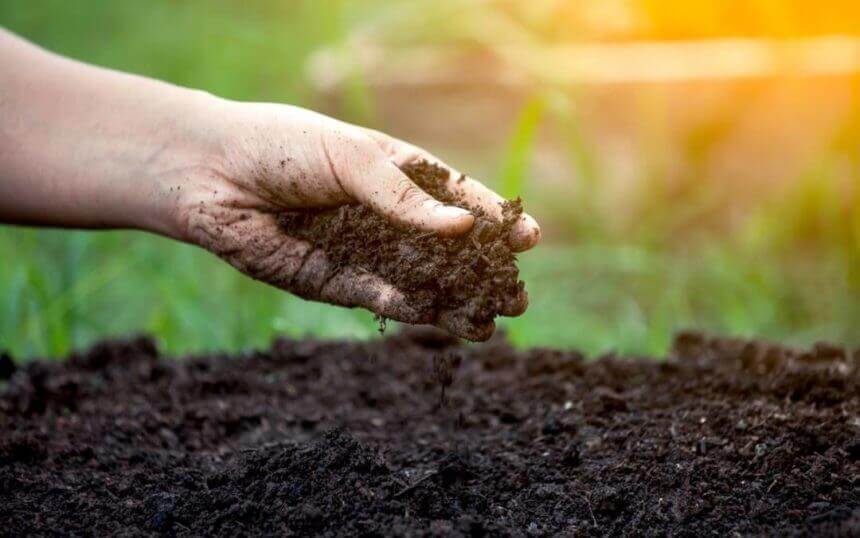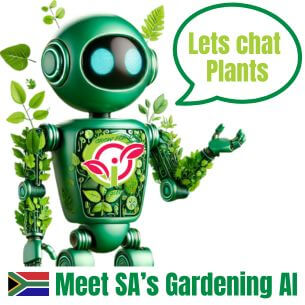Ever asked how can I identify my soil type and why should I add compost?
Knowing your soil type is particularly important. It will help you choose the right plants for your garden and determine which plants will thrive.
There are six main types of soil, clay, sandy, silt, loam, peat, and chalk. To test your soil, the “get your hands dirty test” will reveal which type you have. You need to feel it and look at it. You do not need to be an expert to identify your soil type. Just add water and try rolling it between your hands and squeezing it. Is it sticky, gritty, spongy, friable, or slimy?
Clay soils


Clay soils are heavy, high in nutrients and very fertile. Clay soils have little space for air particles making it hard for water to permeate. These soils drain slowly, take longer to warm up in spring, and dry out to form cracks in summer, this makes it difficult for most annuals, perennials, and vegetables to establish roots.
If your soil feels slimy and sticky when wet, rolls into a firm ball easily and keeps its shape, you have clay soil. This soil type needs a large amount of organic matter like compost to create a better growing medium.
Sandy soils


Sandy soils are light, dry, warm and low in nutrients. They are often known to be acidic. These soils have quick water drainage and warm up quickly in spring. Sandy soils tend to dry out and suffer from nutrients being washed away by rain and irrigation.
If your soil crumbles in your hand, feels gritty and is not waterlogged, you have sandy soil. This type of soil often needs plenty of organic matter like compost, because there is no water retention.
Silt soils


Silt soils are fertile, light and moisture-retentive, but easily compacted. These soils comprise of, medium-sized particles they are well-drained and hold moisture well, but compacts easily and are prone to washing away with rain leaving the roots of plants exposed and vulnerable.
If your soil feels smooth when wet, easily rolls into a ball and does not keep its shape, you have silt soil. By adding organic matter like compost, the silt particles bind into more stable clusters.
Loam soils


Loam soils are a mixture of clay, sand and silt avoiding the negatives of each type. These soils are the most ideal as they are fertile and provide good drainage.
If your soil feels friable, rolls into a ball easily when wet and does not keep its shape, you have loam soil. Even though this is good soil, it is important to add organic matter regularly.
Peat soils


Peat soils are acidic, high in organic matter and moisture but low in nutrients. These soils are, rarely found in a garden.
Peat soils are dark in colour and feel spongy if squeezed. These soils are, mostly used to provide an optimum soil base for planting. Peat soils are, also used for acid-loving plants such as Azaleas, Blueberries and Gardenias.
Chalk soils


Chalk soils are alkaline due to the calcium carbonate or lime within its structure and may be light or heavy. Because these soils are alkaline, they will not support, the growth of ericaceous plants that require acidic soils to grow.
Very chalky soils show signs of visible white stony lumps and cannot be, acidified. These soils can be remedied, to an extent by adding organic matter like compost regularly but only plants that prefer alkaline soil can be, planted in chalk soils.





I blog frequently and I really appreciate your content. Your article has really peaked my interest. I will bookmark your site and keep checking for new details about once per week. I opted in for your RSS feed too. Florinda Putnem Ogden
Having read this I believed it was really enlightening. I appreciate you finding the time and energy to put this article together. I once again find myself spending way too much time both reading and commenting. But so what, it was still worth it! Karoly Hurleigh Biagi
You ought to take part in a contest for one of the highest quality blogs online. I most certainly will recommend this website!| Junette Rem Grous
WOW just what I was looking for. Came here by searching for valve Wallis Eugenius Betz
Major thankies for the blog post. Really thank you! Really Cool. Pandora Alan Fernand Jenn Barde Genevra
This info is invaluable. Where can I find out more? Alana Marshal Goldstein
wow, awesome post.Really looking forward to read more. Really Great.